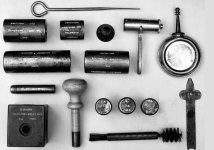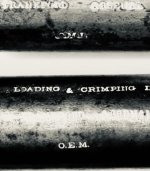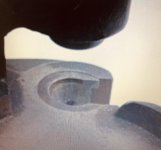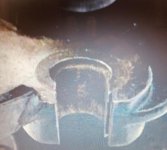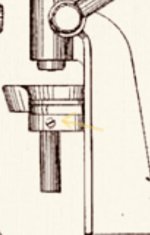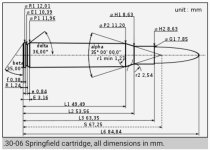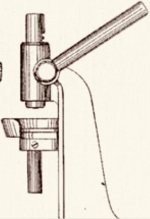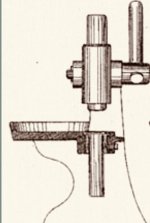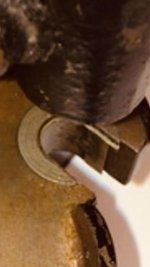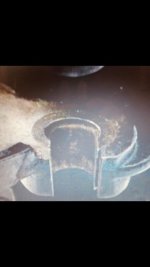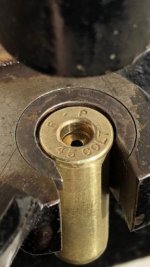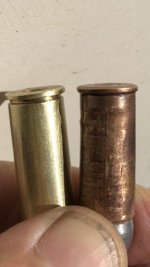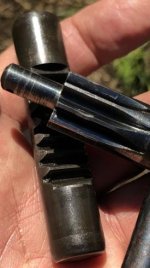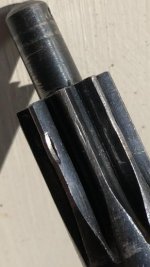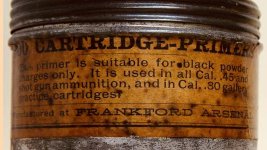Finding the elusive Smith & Wesson 45 Schofield reloading tools has been very enjoyable research.
I found and purchased this Frankford Arsenal bench gang priming tool that was designed to re-prime both 38 & 45 cal pistol and 45 cal & later 30 cal rifle cases beginning in about 1882. The 45 Schofield and Colt revolvers would have been reloaded often during that time frame at various forts on the frontier.
These tools are harder to find than the early commercial reloading tools and kits. Very hard to find! This tool is government inspected at least on one of the moving parts that confirms a 1907 date
And identifies the inspector by initials.
The tool is clearly designed for the 45 case so I will have to look closely at the plunger for a possible earlier inspection date when it arrives. Parts are found replaced on these early military tools due to heavy volume field use and breakage.
A reloading bench became standard at military forts during the Indian Wars. Later at Military schools for training in reloading skills in the field when fresh ammo wasn’t always readily available.
Murph
I found and purchased this Frankford Arsenal bench gang priming tool that was designed to re-prime both 38 & 45 cal pistol and 45 cal & later 30 cal rifle cases beginning in about 1882. The 45 Schofield and Colt revolvers would have been reloaded often during that time frame at various forts on the frontier.
These tools are harder to find than the early commercial reloading tools and kits. Very hard to find! This tool is government inspected at least on one of the moving parts that confirms a 1907 date
And identifies the inspector by initials.
The tool is clearly designed for the 45 case so I will have to look closely at the plunger for a possible earlier inspection date when it arrives. Parts are found replaced on these early military tools due to heavy volume field use and breakage.
A reloading bench became standard at military forts during the Indian Wars. Later at Military schools for training in reloading skills in the field when fresh ammo wasn’t always readily available.
Murph
Attachments
-
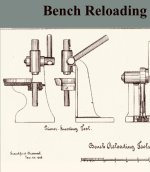 96B23752-4794-4253-913E-1FACF9A12C3A.jpg46.3 KB · Views: 147
96B23752-4794-4253-913E-1FACF9A12C3A.jpg46.3 KB · Views: 147 -
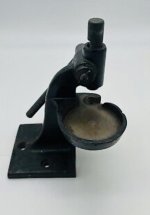 1709FB15-4C30-47F2-B6BA-35F42455C540.jpg20.2 KB · Views: 165
1709FB15-4C30-47F2-B6BA-35F42455C540.jpg20.2 KB · Views: 165 -
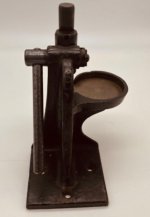 F8B9B817-6158-4FAB-A54B-0E25E0C013A7.jpg21.7 KB · Views: 154
F8B9B817-6158-4FAB-A54B-0E25E0C013A7.jpg21.7 KB · Views: 154 -
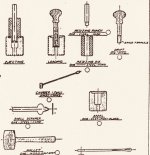 63A33C78-1939-432A-9241-BDE35C65A565.jpeg142 KB · Views: 144
63A33C78-1939-432A-9241-BDE35C65A565.jpeg142 KB · Views: 144 -
 3000E8C2-E65E-4B38-8AF7-F60D0F4E159A.jpg34.4 KB · Views: 117
3000E8C2-E65E-4B38-8AF7-F60D0F4E159A.jpg34.4 KB · Views: 117

